Back in April, on our way to view the solar eclipse in Arkansas, Claudia and I stopped to photograph sand dunes in southern California and New Mexico.
The difference between those two locations was striking. The California dunes were in a remote corner of the Mojave Desert, and we saw only a few other people there. Footprints were scarce. White Sands National Park in New Mexico was teeming with visitors, including many people sliding down steep-sided dunes with snow-sliding devices. While it was nice to see people enjoying the dunes, you had to hike quite a distance to photograph footprint-free sand.
And the sand itself was different. In the Mojave dunes, the sand was tan-colored, with fine particles (probably mostly quartz) eroded from surrounding mountains, blown by the wind, and collected in a basin. White Sands gets its famous color because the sand is 98% gypsum. The gypsum was deposited on an ancient sea floor, lifted into mountains, then dissolved and carried by streams down onto a playa, where evaporation, crystallization, and erosion created the sand that’s blown onto an extensive dune field.
Photographically, that white gypsum sand is striking. During our April visit, after the sun set behind the mountains to the west, the white sand glowed, reflecting the colors of the dusk sky. The soft textures and pastel colors created a magical, surreal landscape. It was like looking over a sea of clouds. I tried to make compositions that emphasized that softness, and captured a bit of that beautiful, post-sunset glow.
In the California dunes the wind was blowing, sending plumes of sand off the ridge tops. Different dunes, different weather, and a different mood. I used backlight to emphasize the blowing sand, and looked for compositions with strong patterns of light and dark, intending to make these images black and white, which I thought fit the harsher, more dramatic mood of that day.
I’m often trying to make photographs that convey nature’s moods, whatever they might be – dramatic or quiet, turbulent or serene, hard or soft. Any mood will do, as long as there is one. And I’m trying to use all the tools at my disposal to convey that feeling: light, tones, colors (or lack thereof), lines, shapes, and camera controls (like a fast shutter speed to freeze the motion of the blowing sand). It all works together.
But it starts with identifying what you want to say. If you know what story you want to tell, or what mood you want to convey, that can guide you to find the light, composition, and camera settings that convey your idea.
And I try to stay flexible. At White Sands, the afternoon light was bright and harsh. When the sun dipped behind the mountains everything changed, and my approach changed with the light. In the California dunes, things were calm, but then as the sun got higher the wind picked up, the sand started blowing, and suddenly there was an opportunity to tell a different story, and convey a different mood.
— Michael Frye
Related Posts: Arkansas or Bust; Shutter Speeds and Mood
Michael Frye is a professional photographer specializing in landscapes and nature. He lives near Yosemite National Park in California, but travels extensively to photograph natural landscapes in the American West and throughout the world.
Michael uses light, weather, and design to make photographs that capture the mood of the landscape, and convey the beauty, power, and mystery of nature. His work has received numerous awards, including the North American Nature Photography Association’s 2023 award for Fine Art in Nature Photography. Michael’s photographs have appeared in publications around the world, and he’s the author and/or principal photographer of several books, including Digital Landscape Photography: In the Footsteps of Ansel Adams and the Great Masters, and The Photographer’s Guide to Yosemite.
Michael loves to share his knowledge of photography through articles, books, workshops, online courses, and his blog. He’s taught over 200 workshops focused on landscape photography, night photography, digital image processing, and printing.

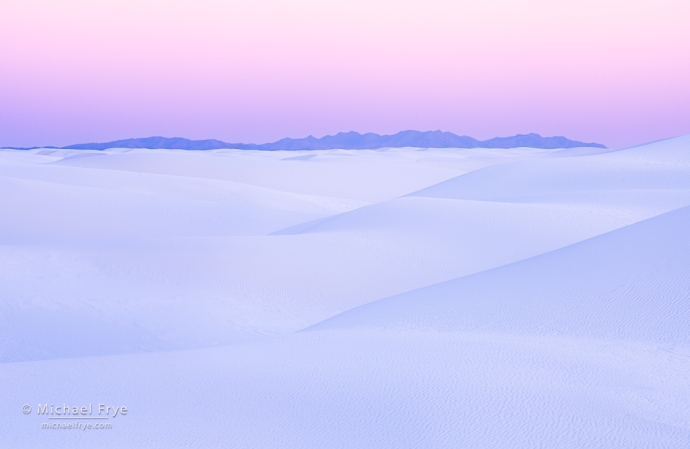
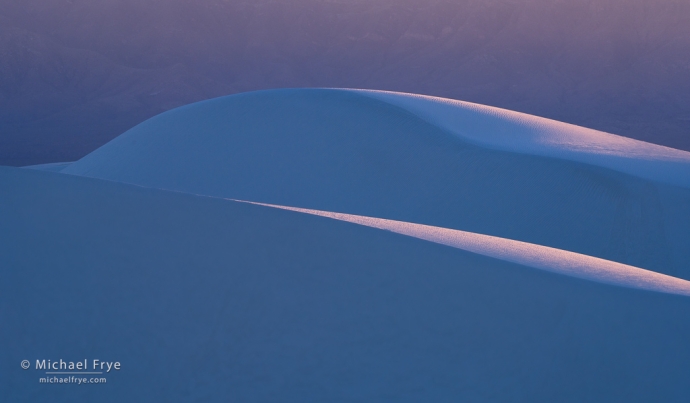
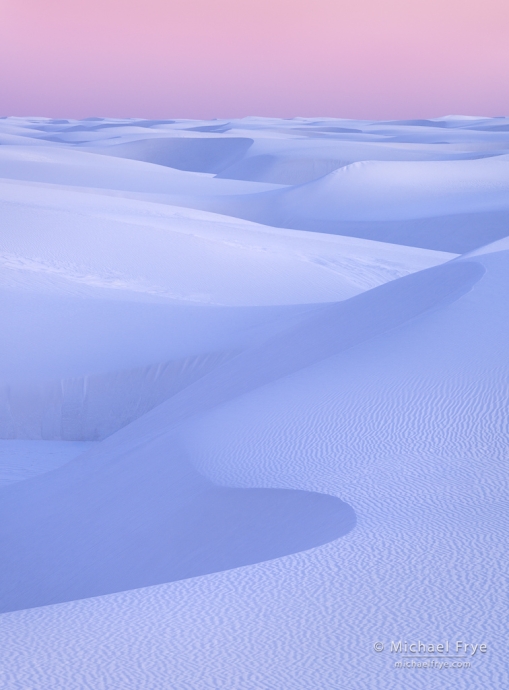
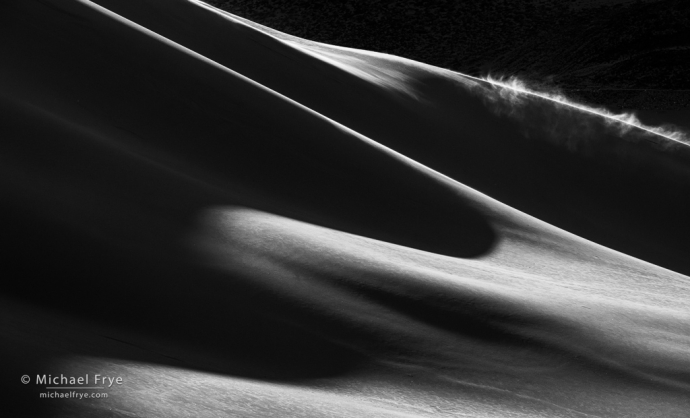
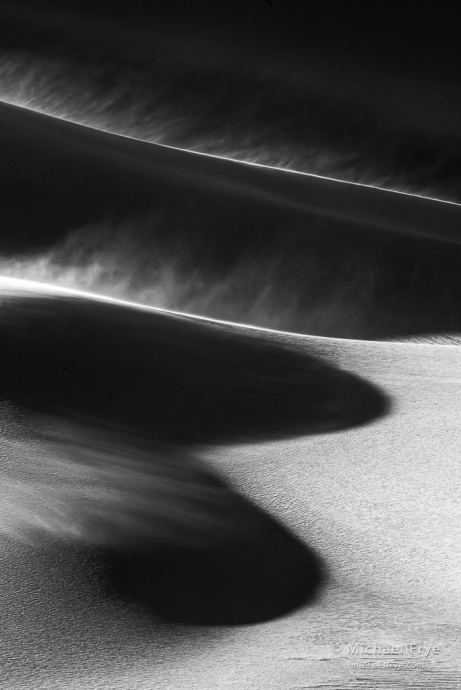








Oh my…these are simply amazing. I love how nature’s mood can change and your interpretation of that change is beautifully rendered. Thank you for sharing
Thanks so much John! Glad you appreciate nature’s moods as well.
Been to Death Valley?
Yes.
Michael,
Your poetic photos of the White Sands dunes are simply breathtaking!
Thanks so much John!
Hi Michael,
Beautiful color shots from White Sands. I had taken your advice from an earlier post and entered several pictures in the recent NLPA contest. I had a similarly-colored picture from White Sands make it to the semi-finals (the third cut where I had to submit a RAW file). Not too bad for a retiree who is very much an amateur. I wouldn’t have entered except for your post because I didn’t even know about this contest. Anyway, thanks.
Mark
Thanks Mark! Glad you entered, and congrats on getting an image to the semifinals.
I couldn’t decide whether to say exceptional or magical so here goes: Exceptionally magical photographs! Thank you for sharing your beautiful photography.
Kathryn
Thanks very much Kathryn!